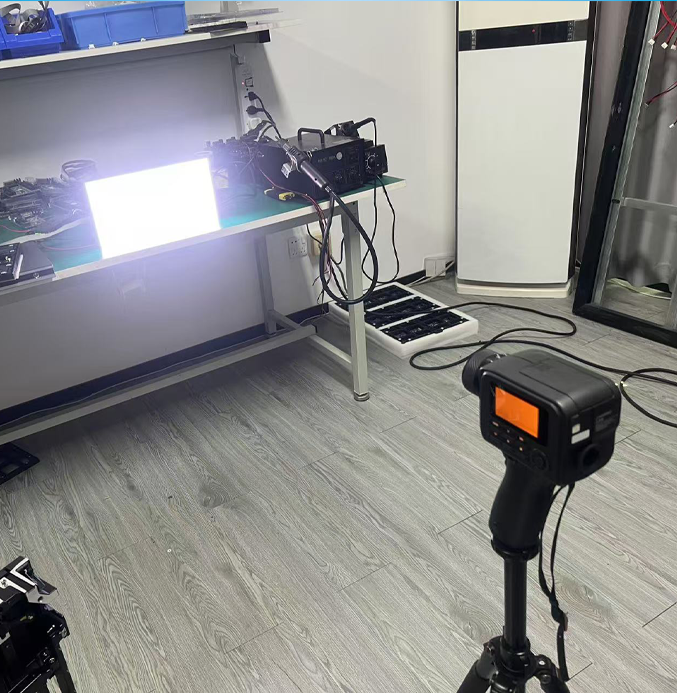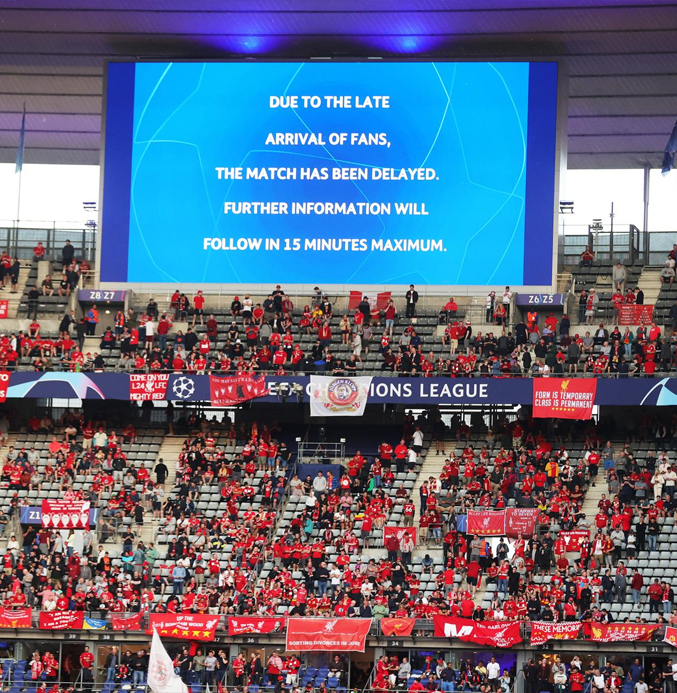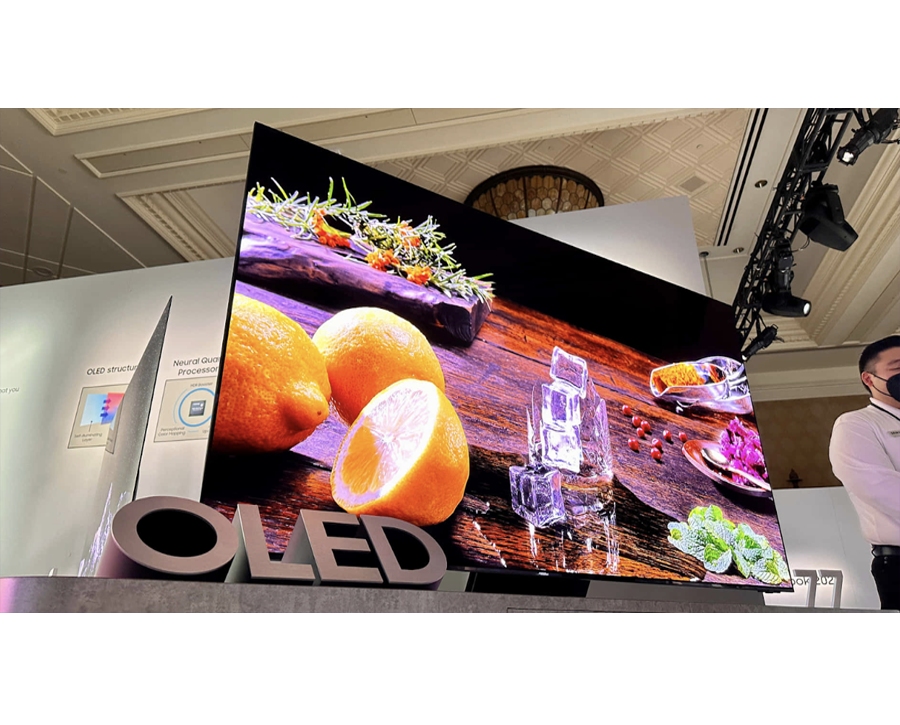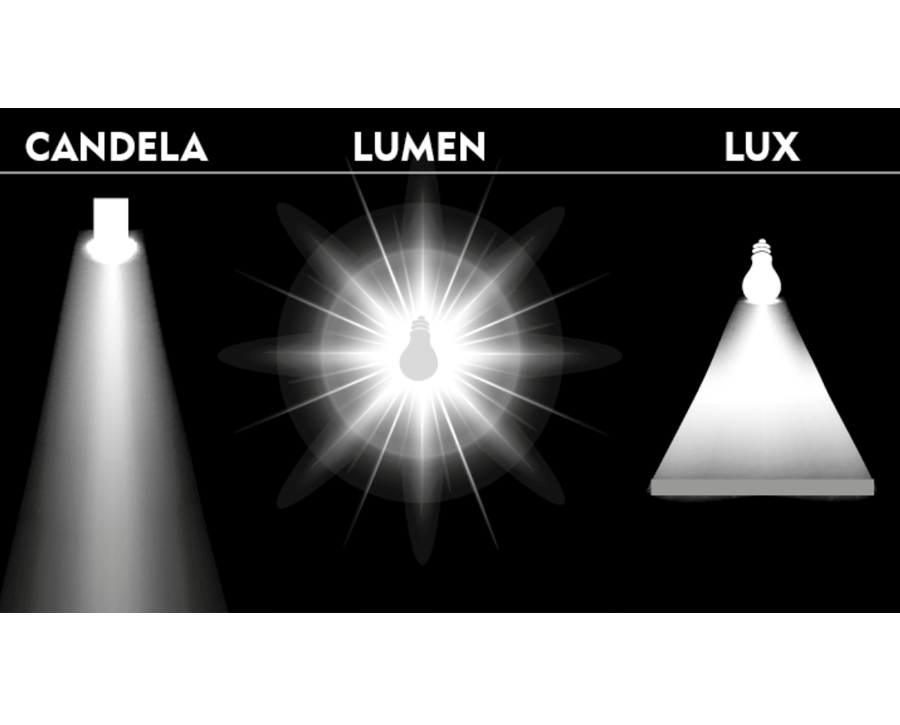
Suppose you visit a store to purchase light fixtures and come across terms like candela, lux, and lumens. How are they different, and which one can properly capture your light demands? Here, we will clarify these terms so that you can make a proper decision for your next lighting project.
What Are Candela, Lux, and Lumens?
Candela
It defines how bright the light is in a certain direction. Candela used to be called everything from ‘new candlepower’ to simply ‘candlepower’ due to its relation to the light from a standard candle.
Today, it is used to measure directional illuminations like spot lights or headlights where convergent beam importance is perceived. For instance, a candela-rated flashlight produces a powerful, directed beam of light suitable for distant illumination.
The candela value does not depend on distance because it is used to quantify only the directional intensity of the source.
Lumens
Lumens is the overall amount of light produced in all directions by the source in question. It is the gross measure of brightness—the ‘big picture’ assessment. A bulb with 800 lumens tells you about the constant visible light output of the source.
Lux
Lux is the luminous flux of a surface and represents one lumen per square meter of the surface area. This unit is important when determining the distribution of light over a plane area that could be a desk, a room or even an outside terrace. As is the case in all its designs, Lux pays a lot of attention to the intensity of light as well as the spread of illumination.
For example, a 500-lumen bulb can provide 100 lux in a small room, while the same bulb in a large hall will bring a much lower lux level of 300-lumen. Lux gives an indication of how ‘‘light’’ an area is likely to appear under given lighting conditions.
Key Differences Between Candela, Lux, and Lumens
Once you know how candela, lux, and lumens are used together, choosing lighting fixtures is easy. Let’s break it down:
- Lumens (lm): Total Light Output
Lumens measure the ‘total light’ of a source. It is as if we’re counting the number of photons flying from the source in all directions. More lumens means more brightness.
- Candela (cd): Brightness in a Direction
Unlike lumens, candela indicates how intense the light is, measured in a particular direction. Imagine a flashlight: it doesn’t matter if its total brightness (measured in lumens); it appears very bright because all of the emitted light is concentrated into a narrow beam. That’s Candela at work.
- Lux (lx): Light on a Surface
Lux quantifies how much of that amount of light actually reaches the surface. A single bulb can therefore have different lux at different distances from the surface. If you move the light farther away then the lux comes down because the same degree of light is spread out over a greater distance.
Steps to Choose the Right Unit for Your Lighting Needs
- Evaluate the purpose:
- For focused lighting, such as task lamps or spotlights, prioritize candela. Its measurement of intensity in a specific direction ensures precision.
- To measure light levels on work surfaces or in rooms, use lux, especially for areas requiring consistent illumination like classrooms or studios.
- For a general sense of light output across a room or environment, focus on lumens. This is particularly relevant for comparing light bulbs or assessing overall brightness.
- Consider the environment:
- Outdoor lighting (e.g., stadiums or parking lots) often requires balancing lux to ensure even coverage and sufficient lumens for visibility.
- Indoor environments, such as offices or living rooms, benefit from lumens to determine bulb output and lux for task-specific zones.
- Prioritize based on impact:
- Use lux to optimize lighting ergonomics, minimizing strain and maintaining mood and productivity.
- Lumens provide an efficient way to gauge energy usage, helping you choose between traditional and energy-saving bulbs.
- Candela is best when directionality is critical, such as guiding light beams in precision tasks
Applications of Candela, Lux, and Lumens in Lighting Design
In lighting design, candela, lux, and lumens serve distinct purposes across various fields. Here’s how they are applied:
Candela
Candela is essential in applications focusing on light direction and intensity. For instance:
- Theatrical lighting: Stage lights require high candela values to direct intense beams onto performers.
- Car headlights: Manufacturers measure candela to ensure focused light beams, improving nighttime visibility without scattering light into oncoming traffic.
- Spotlighting: Used in galleries to highlight artwork or specific objects.
Lux
Lux measures how much light falls on a surface, which is crucial for:
- Workspaces: Offices and factories need between 300 and 500 lux to ensure productivity and safety.
- Outdoor stadiums: Sporting venues rely on lux to maintain uniform illumination across the field.
- Homes: Lux assessments help balance natural and artificial lighting for tasks like reading or cooking.
Lumens
Lumens are widely applied to quantify overall brightness in various settings:
- Residential lighting: Consumers rely on lumen ratings when purchasing bulbs to guarantee that their rooms will be well-lit.
- Street lighting: High-lumens are utilized in the fixtures for visibility and security on roads.
- Retail spaces: Stores require high lumens for bright, inviting environments that showcase products effectively.
These units collectively enable designers to optimize lighting for specific tasks, enhancing both functionality and ambiance.
Comparison of Candela, Lux, and Lumens
Here’s a side-by-side analysis to clarify the distinctions between these terms:
| Feature | Candela | Lux | Lumens |
| Definition | Measures intensity of light in a specific direction. | Measures light falling on a surface. | Measures total light emitted by a source. |
| Focus Area | Directional light, e.g., spotlights. | Surface illumination, e.g., office desks. | Total brightness, e.g., lightbulbs. |
| Units of Measurement | Intensity in one direction | Brightness over a defined area. | Total light output. |
| Applications | Headlights, spotlights. | Workspace lighting, outdoor fields. | Home lighting, retail displays. |
Conclusion
Understanding candela, lux, and lumens empowers you to tailor lighting to specific needs, ensuring functionality, comfort, and efficiency in any environment.
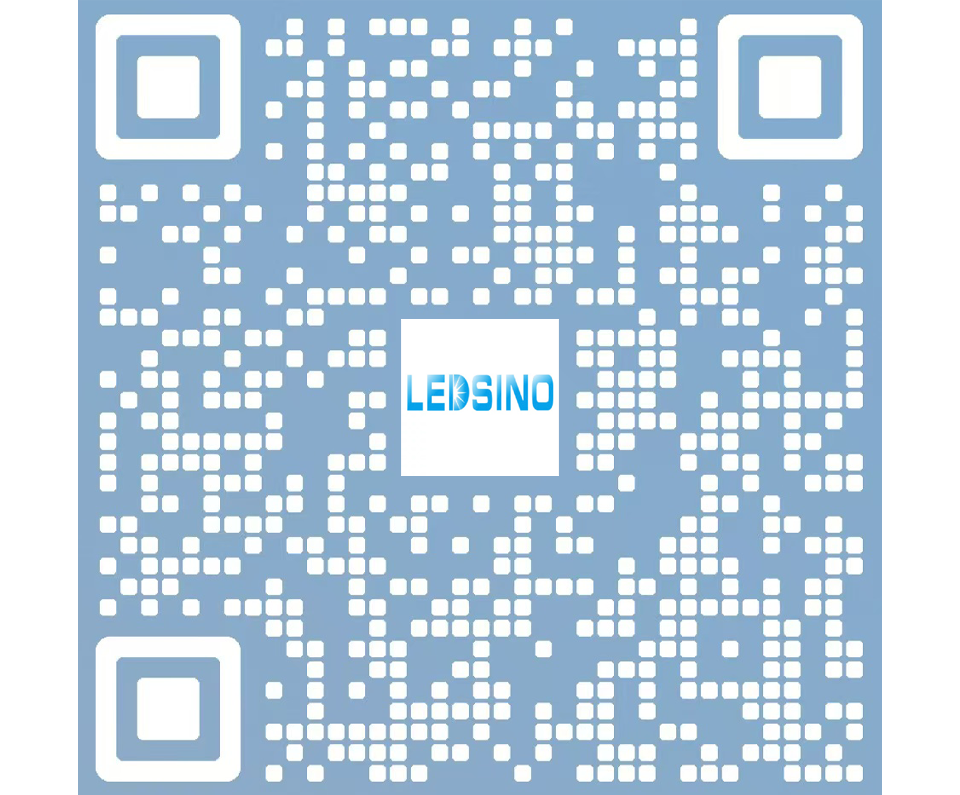
Enter the digital world with our advanced display technologies.

